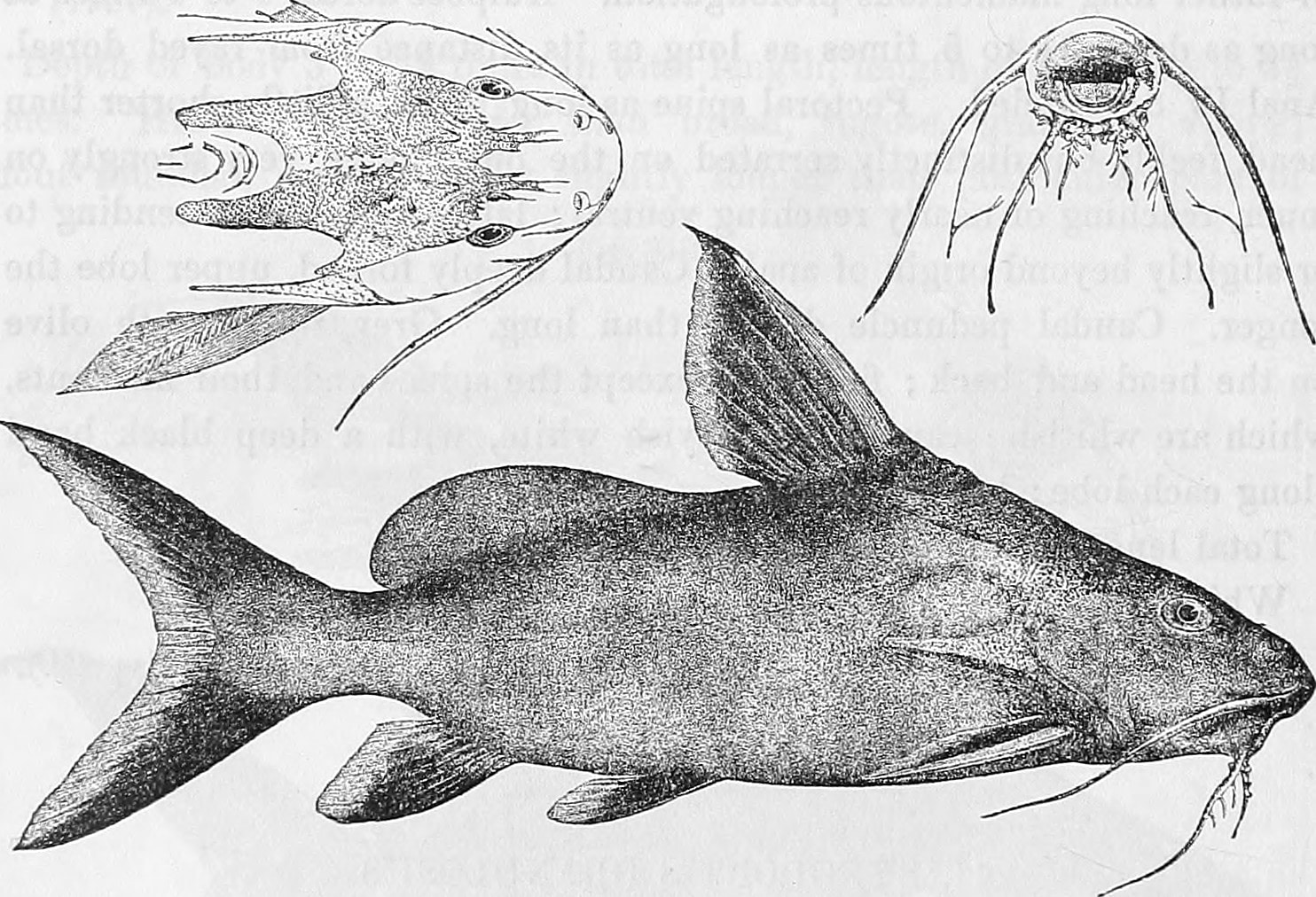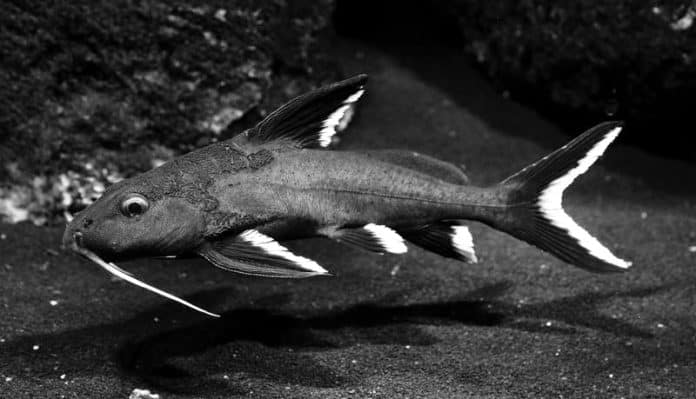Synodontis Granulosus – Lake Tanganyika Fish
Synodontis Granulosus is a species of deciduous catfish found in the Democratic Republic of Congo, Burundi, Zambia, and Tanzania, whose only habitat is known to be Lake Tanganyika. Described for the first time by Belgian and English zoologist George Albert Boulenger in year

1900, from species collected in many parts around the Lake Tanganyika. The name of the species comes from the Latin word “granulum”, meaning grain, representing the granular papillae present on the body skin of the fish.
Detailed Information About Synodontis Granulosus Catfish
The Head and Features Around It
Like the rest of the Synodontis genus, Synodontis Granulosus has a strong, bony head that extends backward to the spine. The Synodontis Granulosus size of the head is about 3⁄10 of the normal length of the fish. The head has a thin, skeletal, outer part called the humeral process. The figure and dimension of the humeral process is important in identifying the species. For Synodontis Granulosus, the humeral process is slender, long, and ugly in appearance, with a distinct spine on the lower edge. The upper is curved inside and has a sharply pointed end. It is about 2⁄3 of the head length. The circumference of the eye is about 1/7 of the head’s length.
This fish has organs used for sensing things which are located closely to the mouth, known as Barbels. The maxillary barbels are situate on the upper jaw, and 4 of mandibular barbels can be found on the bottom jow. The maxillary barbel has membrane that is thin and situated close the fish end, straightened without any branches. It stretches at least below the tip of the pectoral fin, slightly longer than the head and 3⁄10 of normal body length. The outer pair of mandibular barbels stretches almost to the pectoral girdle, approximately 7⁄10 of the head length, has four to five branches without additional branches. The pair of inner mandibular barbels is approximately half as long as the pair outside, measures around 1⁄4 of the length of the head, and has two pairs of branches, with no additional branches present.
Synodontis Granulosus skin has a large number of small wrinkled skin. The exact purpose of the folding skin is unknown, but it is characteristic of the Syndontis species known to Lake Tanganyika. The outer granular papilla is present and spreads on all fins.
Fins
The fin at the fore front of the dorsal fin and thoratic fins of the Syntontis species are tough sharp bones. In Synodontis Granulosus, the dorsal fin is long, its length is approximately the same as that of its head, perfectly straight, is smooth in front and tooth aged like on the back, and ends with a short black filament. The remaining part of the dorsal fin is made up of rays of seven to eight branches. The front spinal cord is a bit curved, with a close length such as that of the spinal cord, with tiny portion in the front and the remaining huge part in the back. The thoracic spine completes in a short, soft black.
Other chest fins consist of seven of the eight rays of branches. The end of the adipose has no rays, is long and well developed, and has a convex shape. The pelvic fin has approximately 600 to 700 arrays that are branched and without additional branches on them. The posterior pelvic tip edge is situated on the anterior edge front of the adipose fin. The fin at the end of the fish has three to five rays that are unbranched and seven to nine rays that are branched; it is aligned vertically with adipose fin. The tail, or caudal end, is forked, with lobes that are pointed, and has eight rays on the upper lobe, while its lower socket has nine.

Mouth
The fish’s mouth looks down and has broad lips that have a papilla. All Syndontis members have a known as a premaxillary toothpad, which is found at the the upper jaw’s front. This part of the body includes various rows of teeth that are short with a shape of chisels. In some species, this toothpad is made up of a large patch and several layers on a large column. In some Syndontis species, this pad of tooth is clearly divided into two distinct groups, separated by a thin leather band that divides the toothpad. This feature is key in allowing researches to distinguish the differences of these two types but equal species of Syndontis. In Synodontis Granulosus, the toothpad is not interrupted, or in other words it is continuous. On the jaw that is lower, known as mandible, Syndontis teeth are attached to flexible structures, stem looking like and are described as “s-shaped” or “hooked”. The number of mandible teeth is also another feature that gives a clear distinction between species; in Synodontis Granulosus, a mandible has 28 to 51 teeth, whole set packed in a single column.
Openings
Numerous of Synodontis species have an opening or series of openings known as axoreary pore. It is found on the body’s sides under the humeral process and before the last pectoral spine. The actual function of the port is unknown to scientists, although its presence has been seen in seven other genera of catfish. The genus Acrochordonichthys fish have been shown to secrete mucus that packs toxin out of their axillary pore, but there has been no uniform agreement among parties studying the fish on the actual role of this secretion. That said, Synodontis Granulosus features a big, black, axillary pore on every side of its body, just below the humeral process.
Colors and Patterns
The fish has a slate gray to brown-olive color of the body accompanied with a black sheen; young ones show a visible pattern of spots that disappears slowly as they age. The lower part transitions from yellow to gray. Many species of Lake Tanganyika Synodontis have a distinct pattern with black triangles on the bases of all rayed fins, existing in Synodontis Granulosus, and white and yellow fins back edges. A black bar that stretches from the bottom of each fin’s tip lob exists on the caudal fin.
Barbels are white; The bases in numerous occassions are scattered in color.
Dimensions
The known fish figures’ maximum height is 21.6 centimeters (8.5 in) and the total length is 27 centimeters (11 in). The female genus Synodontis is generally slightly larger than males of the same age.
Habitat and Their Behavior
The main wild habitat of the fish is Lake Tanganyika, which has a temperature of 22 to 26 ° C (72 to 79 ° F), a pH of approximately 8.5 – 9, and a dH of 4-15. The fish live in coastal, sandy, and muddy areas, and is found at depths of up to 130 meters (430 ft), but usually between 20 and 40 meters (66 and 131 ft). The reproduction behavior of most Synodontis species are not well known yet, not more than the incidents of egg harvesting and numbering from gravid females.
Synodontis Granulosus breeding most likely happens during the flood season between July and October, and the pair swim together during the matting process. In loose terms, species of the nature of Synodontis are omnivore, getting their food from sponges, bivalves, algae, insect larvae, gastropods, crustaceans, and other fish eggs. The growth rate is very fast in year one, and then it goes down as the fish gets older.
For more articles related to lakes in Tanzania and their inhabitants click here!


































